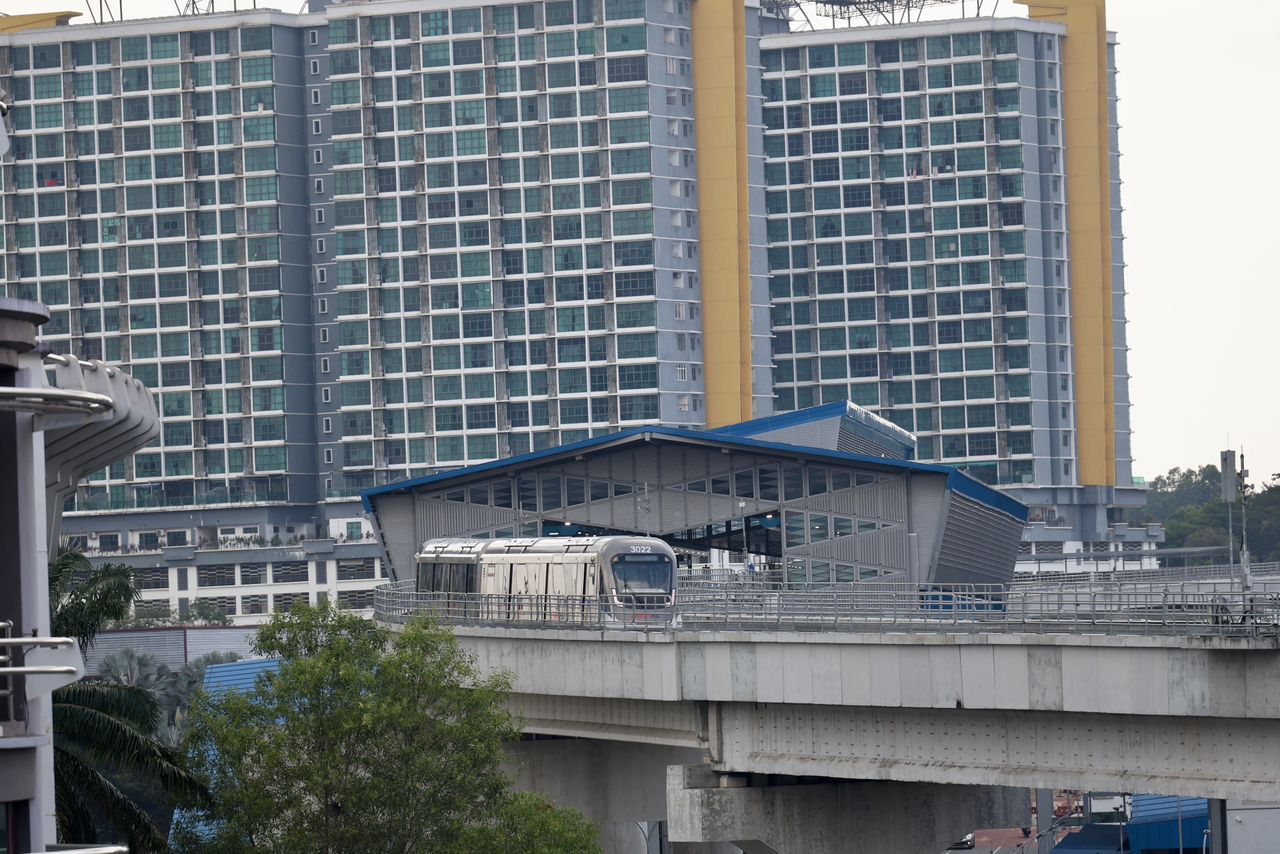SHAH ALAM, Oct 1 — With the LRT3 line expected to open at year end, several old towns along the line, which have gotten quieter and whose growth have slowed, are set to be revived. The 37km track across the western Klang Valley won’t just shorten journeys, but bring people to forgotten towns and create economic opportunities, and boost local tourism and economic growth.
The LRT3 line, which starts in Bandar Utama in Petaling Jaya, comprises 26 stations, including nine in Klang — Bandar Baru Klang, Pasar Besar, Jalan Meru, Pasar Jawa, Taman Selatan, Sri Andalas, Klang Jaya, Bukit Tinggi, and Johan Setia.
These stations are peppered across Klang’s historic towns that still house traditional markets, old eateries, and houses of worship. But due to residents moving to urban centres and the rise of new cities, Klang’s old-town charm is fading, leading to it being called a ghost town or perceived as a hub for foreign workers.
For traders who have remained, the LRT3 isn’t just public transport, but a long-awaited lifeline.

Hopes for revival of sleepy towns
Klang Chinese Chamber of Commerce and Industry president Dato Jeffery Tan said that even though Klang is known in the industry, manufacturing and port transport sector, the city centre and old roads are becoming lonelier and lonelier.
“With the growth of cities and suburbs and residents moving away, this area is no longer bustling. The LRT3 will be an important catalyst to the revival of this area,” he told Media Selangor.
He said the value of old areas can be sorted into three categories:
1. Historic: Train stations, alleys, areas under bridges that host cultural and culinary attractions
2. Old residential areas: If the last-mile connectivity in a 500m to 1km radius (around LRT3 stations) can be streamlined, it can revive community living
3. City centre: Only with crowds can business competitiveness be improved, especially when faced with new towns like Setia Alam and Bukit Raja
Tan said that with the LRT3 and last-mile connectivity improvements, Klang could draw more tourists interested in half-day and day trips.
“As long as the transport brings people in, business and job opportunities will come. Even if just 2,000 come through this area every day, some of them spending here would be enough to generate the economic cycle,” he said.
“The LRT3 brings good news to Klang’s residents and traders because this modern transport system will unite the area and bring new energy to the community.”

Traders pin hopes on LRT3
The Klang city centre and old routes like Jalan Gopeng, Jalan Taiping, and Jalan Meru have grown especially quiet, when they used to be bustling business centres. Now, most shoplots stand empty.
Lee Sek Wun, who sells traditional biscuits and cakes at his store Bee’s Bakery on Lorong Gopeng, said he knows the area is being forgotten.
“After 6 o’ clock in the evening, this area gets really quiet, and on weekends, over 60 per cent of stores aren’t open. Without crowds, business cannot go on,” he said.
He added that with the migration of the area’s native residents, it has become a hub of foreign workers, with many abandoned shoplots rented by immigrants.
“This is the reality of the market, not the shopowners’ intended outcome. We really hope this area can be revived. Jalan Taiping used to be so busy, but since the night market was moved, the number of visitors has gone down,” Lee said.

Silent roads need new energy
In Bukit Tinggi 1, wonton noodle trader Yap Wah Chai shares the same hope. The area, which is nearly 20 years old, has gotten increasingly silent due to stunted growth.
“This place is no less unique. There’s still a lot of delicious traditional food,” he said, expressing hope that the LRT3 will draw more people, especially foreign tourists, to try local dishes in Klang.
However, Jalan Meru goods trader Penny Yeo Seok Hoon said the situation is more complicated.
“The original residents have moved to newer areas, mostly foreign workers remain. With no big mall, the impact on the economy is uncertain.
“But we hope the LRT3 can bring new energy to and revive this area,” Yap said.

Creating cultural, tourist attractions
To support the LRT3, the Klang Royal City Council (MBDK) has allocated funds for city cleanliness and to upgrade infrastructure including pedestrian walkways to welcome local and foreign visitors.
MBDK councillor Lee Sek Wun emphasised that Klang is a multicultural city.
“The Chinese community is known by its bak kut teh, Indian culture is centred on Jalan India, and the Malay community showcases its uniqueness in Pasar Jawa,” he said.
Lee said that traditional food, houses of worship, and viral locations make Klang the complete package for tourists.
“For example, the Pasar Jawa LRT3 station is closest to the city and will be the main tourist draw,” he added.
He revealed that local authorities have worked with Tourism Selangor and the private sector to develop the 200m Jalan Budaya along Lorong Tingkat, whose four-month construction is to kick off this year. The street will be closed on weekends to host various activities.
“The second phase would focus on upgrading Pasar Jawa into a Dataran Budaya (Culture Square), similar to Central Market in Kuala Lumpur, that will showcase traditional handicraft, art and and souvenirs so tourists experience Klang’s diverse cultures,” Lee said.

